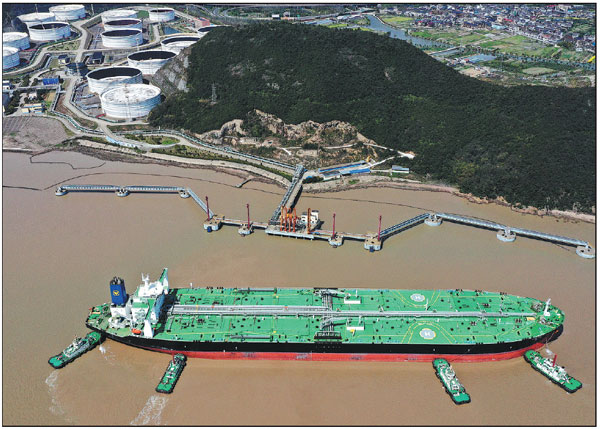Independent refiners see opportunities, woes
Chinese independent refiners, also known as teapots, saw their collective crude oil imports reach 2.72 million barrels per day in January, up 27.7 percent year-on-year, figures from S&P Global Platts reveal.
Their crude imports in January decreased 8.7 percent from December, but insiders believe the reason is due to the comparatively lower demand in China during Spring Festival, which fell in early February this year.
The buying in February pushed up spot premiums for the independent refiners' favorite crude grades from Russia, Oman, Africa, and Europe by between 50 US cents and $1 more a barrel than quotes from early January, according to Reuters' trade sources.
The amount of crude imported by the teapots is already at an elevated level, said Li Li, research director at energy consulting company ICIS China.
The decrease compared with the amount imported in December was partly because the teapots were ramping up efforts to use up their crude oil import quota by the end of last year, she said.
Li expected crude imports by independent refiners in China in March and April will remain at a high level, as the companies restock supplies while oil prices are still comparatively low.
The capacity of independently run firms in China tends to range from 20,000 bpd to 100,000 bpd.
According to the International Energy Agency, China and the Middle East will remain the largest sources of incremental refining activity this year.
However, consultancy Wood Mackenzie also warned that higher crude prices and volatility would squeeze margins for Chinese refineries, especially the independent refiners, thanks to the new taxation system that raises their input costs.
"The teapots have struggled to sell, which in turn lowers utilization affecting margins further," it said.
It forecasts that more stringent quality parameters to be enforced for the country's refined products will require higher investment and upgrades that will "weed out inefficient plants" and could lead to a closure of 150,000 bpd of refining capacity by 2020.
|
An oil tanker docks at a crude-receiving terminal in Zhoushan, Zhejiang province, on April 1. Yao Feng / For China Daily |
(China Daily 04/03/2019 page9)



















